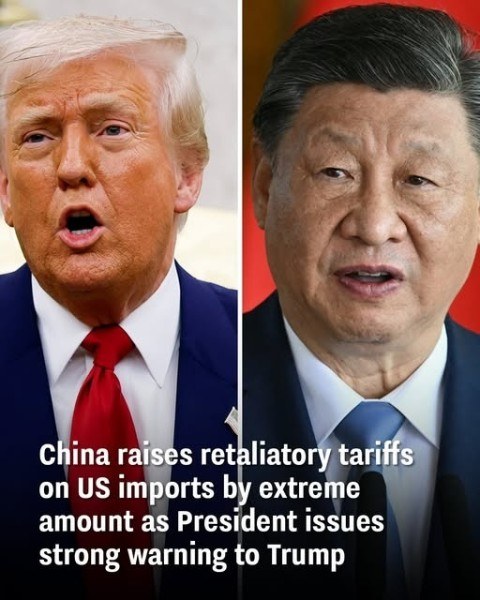
China has significantly escalated its retaliatory tariffs on U.S. imports, pushing the trade conflict with President Donald Trump to new extremes. In response to Trump’s recent tariff hike of up to 145% on Chinese goods, China has raised its own tariffs from an already steep 84% to a staggering 125%, signaling a major economic clash between the two global powers.
The ongoing tariff war, reignited after Trump’s return to the presidency in January, has intensified rapidly. On April 9, Trump’s administration implemented the new tariff levels targeting a wide range of Chinese products. Just days later, on April 12, China responded with its own sweeping tariff increase. Ironically, the U.S. decision to spike tariffs on China came on the same day it announced a 90-day tariff pause for most other countries, including one with no human inhabitants—home only to seals and penguins.
A statement from China’s State Council Tariff Commission called out the U.S. actions as “unilateral bullying,” claiming the drastic increases were a violation of international trade norms and economic principles. The commission cited several Chinese laws as the legal basis for their retaliatory move, emphasizing the tariffs were approved by the State Council and effective immediately.
The announcement detailed that under the new measures, the tariff rate set in an earlier policy would rise to 125%, effectively eliminating any economic viability for American goods entering the Chinese market. The statement added that if the U.S. continues its aggressive tariff stance, China would not recognize or accommodate further provocations.
The trade war was reignited when Trump signed an executive order accusing China, Mexico, and Canada of contributing to illegal immigration and drug trafficking into the United States. That order marked the start of the new wave of tariffs, beginning with a 10% blanket duty on Chinese imports on February 4. In retaliation, China implemented its own tariffs days later—15% on coal and liquefied natural gas and 10% on crude oil, agricultural machinery, and large-engine U.S. vehicles.
Since then, the tit-for-tat exchanges have snowballed. As it stands now, China has locked in a 125% tariff on American goods, while the U.S. is charging Chinese imports with duties as high as 145%.
This escalating economic standoff shows no signs of cooling, and with both sides digging in, the global market is bracing for the fallout of what is shaping up to be the most severe trade confrontation in years.
